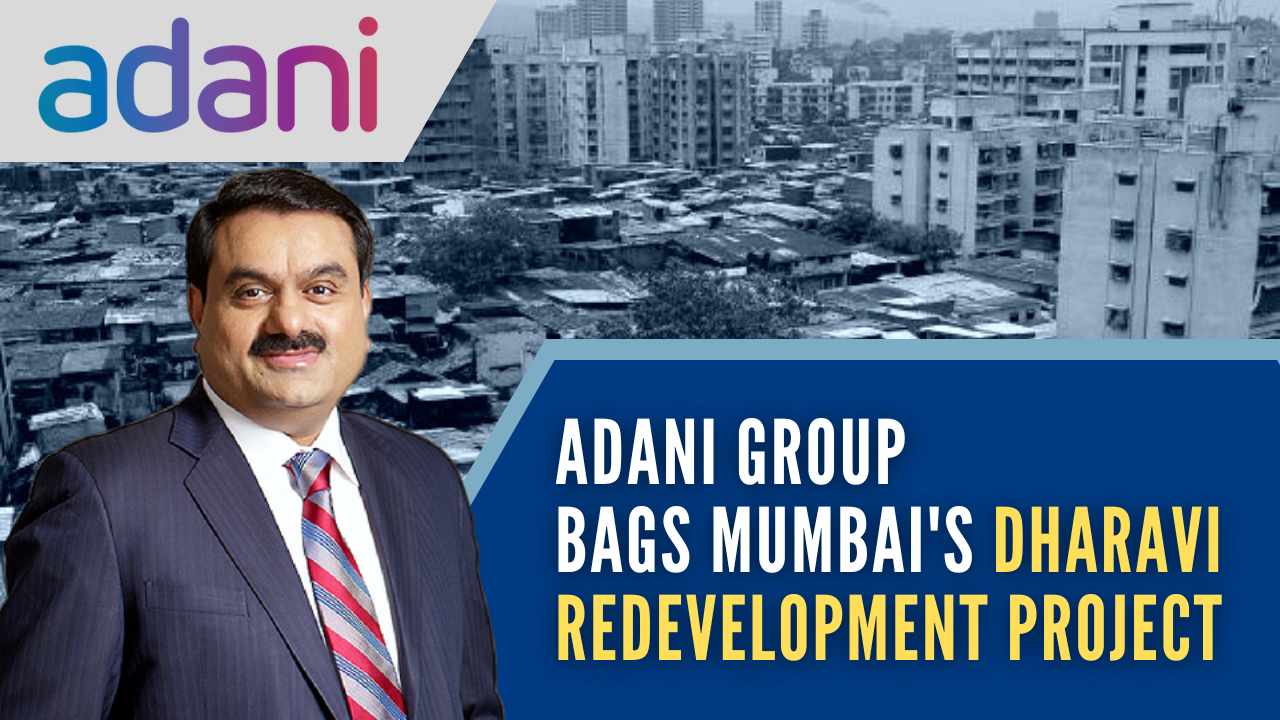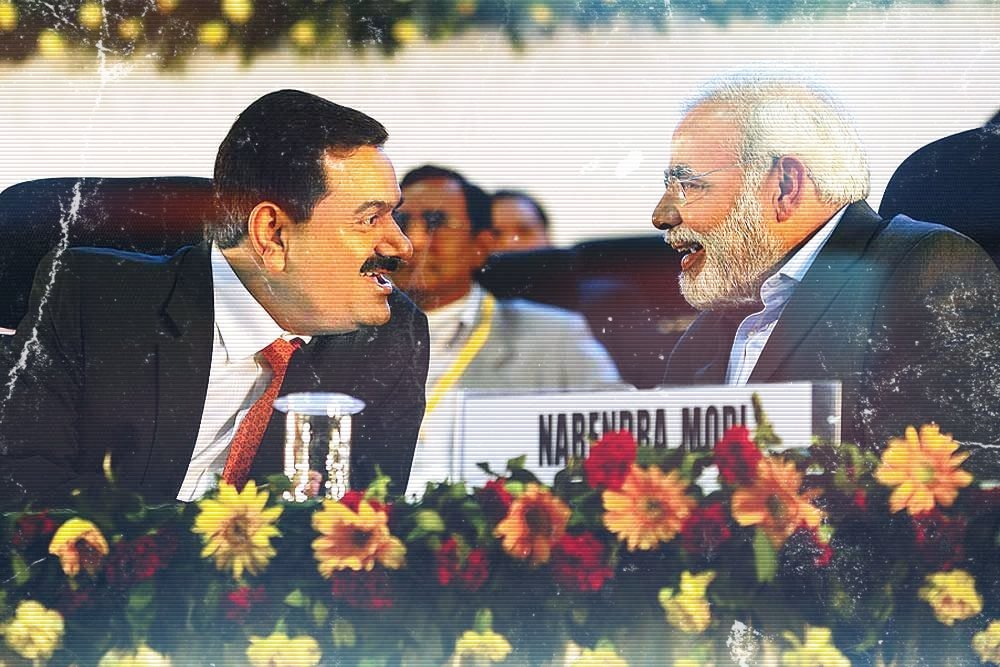Is Adani Resorting To Muscle Power To Give Wings To His All-Important Rs 12,500 crore ‘Dharavi Project’? For How Long Will The Nation Turn A Blind Eye On All The Allegations Against Adani Group?
The Dharavi redevelopment project, led by the Adani Group, promises a transformative facelift for one of Asia's largest slums. However, beneath the surface of his ambitious initiative lies many complexities, ranging from financial intricacies and legal disputes to political dimensions and community apprehensions. The latest is the allegation of using 'muscle power' to evict Dharavi residents. In this scrutiny, critical questions surround the project and the destiny of Dharavi.

Adani Group, in its pursuit of the Dharavi redevelopment project, is allegedly employing coercive tactics, as asserted by Varsha Gaikwad, Mumbai Congress chief and MLA from Dharavi.
Gaikwad claimed in the assembly on Monday that the conglomerate, having secured the project for Asia’s largest slum redevelopment, is utilizing the influence of former police officers and encounter specialists to intimidate residents into vacating their homes.
Gaikwad, who recently led a protest against the Dharavi redevelopment, revealed that some residents received eviction notices during unauthorized night visits, with a mandate to vacate within four days.
However, without specifying individuals, she mentioned that three of these officers had prior service in Dharavi.

Expressing concern for the residents, Gaikwad highlighted the lack of alternative accommodations during the project’s completion and characterized the strategy as an attempt to stifle the residents’ voices using force.
She urged Deputy Chief Minister Devendra Fadnavis to address the issue and called on Speaker Rahul Narwekar to direct government intervention.
She alleges that since Adani Housing secured the project bid, the slum dwellers have been under constant threat.
She emphasized the need for clarity on rehabilitation locations and criticized the absence of hearings on eligibility, a mandatory legal process. Gaikwad also pointed out the state’s payment of ₹800 crore to the Railways for required land and stressed the residents’ right to adequate rehabilitation.
By the end of the assembly session, there was no official statement from Fadnavis or Narwekar.
The Validation Of Claims Against Adani
Speaking to reporters outside the legislature, Gaikwad accused that alleged “goons” of being paid and providing infrastructure, vowing that affected residents would take to the streets if the situation persisted.
Raju Korde, convenor of Dharavi Bachao Andolan, supported Gaikwad’s claims, identifying two senior police officers with ties to Shahu Nagar police station engaged by Adani for the task.
Korde further expressed concern about the lack of clear communication, creating apprehension among residents about the project’s future.
Additionally, 167 residents from various areas received notices from the Central Railway to vacate their homes by December 12, sparking anger and resistance. Local leaders and activists rushed to the affected areas, pledging to prevent forced homelessness.
Former MLA Baburao Mane accused the developer of conspiring to evict residents and transform Dharavi into a business hub, emphasizing the disparity between the number of tenements and shops and the proposed rehabilitation capacity.
The state government awarded the 259-hectare redevelopment project to the Adani Group in July.
Former Chief Minister Uddhav Thackeray alleged favoritism towards Adani and announced plans to lead a protest rally on December 16, joined by Dharavi Bachao Andolan.

The Ambitious Dharavi Project
Adani Group‘s commencement of the Dharavi redevelopment project with a proposed investment of Rs 12,500 crore has stirred both anticipation and skepticism.
According to reports, the significant funding is expected to come from Adani Group’s internal resources, supported by substantial cash reserves.
The creation of a special purpose vehicle (SPV), jointly owned by Adani Group (80%) and the Maharashtra government (20%), raises questions about the dynamics and control over this venture.
Initially proposed in 2004, the Dharavi redevelopment faced legal hurdles and debates that hindered its initiation.
Despite global tenders, Adani Group emerged as the highest bidder, outpacing DLF. The Maharashtra government’s approval in July marked a turning point for the 590-acre slum, home to over 900,000 residents and numerous businesses.
However, the shift from the original proposal to modern apartments, offices, and malls raises concerns about the impact on the existing community and its character.
As the ambitious project unfolds over seven years, estimated to cost $4-5 billion, the injection of Rs 12,500 crore into the SPV for initial construction and logistical activities prompts scrutiny.
An ongoing authentication survey for slum building ownership and the joint approval of a master plan involving the state government, Mumbai Metropolitan Region Development Authority (MMRDA), and Adani Group adds intricacy to the project’s execution.

Residents Against Adani From The Start
The residents’ skepticism is further fueled by recent financial setbacks faced by Gautam Adani and allegations of preferential treatment from political allies.
The fallout from the Hindenburg Report, which raised questions about transparency and fairness, casts a shadow on the redevelopment effort.
The legal dispute initiated by SecLink Technologies Corporation, alleging manipulation in the bidding process, introduces additional complications and potential delays.
Adani’s close ties with Prime Minister Narendra Modi and the BJP inject a political dimension into the project, prompting concerns about favoritism and undue influence.
Critics argue that Adani’s business ascent is intertwined with political connections, and the opposition Congress party seizes the controversy to apply pressure ahead of the 2024 national elections, accusing the Maharashtra government of granting Adani an unfair advantage.
In response to mounting concerns, the Adani Group defends its position, emphasizing fundraising and investor support post the Hindenburg report.
Gautam Adani acknowledges the challenges of rebuilding Dharavi while expressing hope for prosperity. Yet, as the redevelopment start date approaches, uncertainties about feasibility, housing prospects, and the transparency of the bidding process leave the fate of Dharavi hanging in the balance.
The intricate interplay of politics, business, and community welfare adds to the apprehension, highlighting the complex transformation awaiting the lives and surroundings of Dharavi’s residents, or is it?

Here are some critical questions based on the information that has come to the forefront-
1. Project Funding and Accountability –
-
- How transparent is the funding structure of the Dharavi redevelopment project, particularly regarding the injection of Rs 12,500 crore from Adani Group’s internal resources?
-
- What mechanisms are in place to ensure accountability for the utilization of funds, given the joint ownership of the special purpose vehicle (SPV) by Adani Group and the Maharashtra government?
2. Bidder Selection and Legal Disputes-
-
- How did Adani Group emerge as the highest bidder for the Dharavi redevelopment project, and what factors contributed to its selection over other global tenders, such as DLF?
-
- How valid are the claims made by SecLink Technologies Corporation regarding manipulation in the bidding process, and how might this legal dispute impact the project’s timeline and execution?
3. Political Influence and Allegations –
-
- To what extent does the close relationship between Gautam Adani and Prime Minister Narendra Modi, as well as the ruling Bharatiya Janata Party (BJP), influence the decision-making process for the Dharavi redevelopment project?
-
- How valid are the accusations of favoritism and undue influence, and what measures are in place to ensure impartiality in the project’s execution?
4. Community Concerns and Displacement-
-
- What efforts are being made to address the concerns raised by Dharavi residents, especially regarding the alleged use of muscle power and intimidation tactics to facilitate eviction?
-
- How is the Adani Group planning to manage the relocation of slum residents to new transit tenements, and what assurances are provided for their housing and well-being during and after the redevelopment?
5. Project Viability and Hindenburg Report Fallout –
-
- In light of Gautam Adani’s recent financial setbacks and the fallout from the Hindenburg Report, how confident is the Adani Group in the successful execution of the Dharavi redevelopment project?
-
- What specific measures and changes have been implemented by the Adani Group to address concerns raised in the Hindenburg Report and reassure stakeholders about the project’s viability?

6. Government Oversight and Approval Process-
-
- How involved is the state government, Mumbai Metropolitan Region Development Authority (MMRDA), and Adani Group in the approval and implementation of the master plan for the Dharavi redevelopment project?
-
- What role does the government play in ensuring a fair and transparent process, particularly in light of allegations of preferential treatment and manipulation in the bidding process?
The Last Bit, Time and time again the Adani Group, led by Gautam Adani makes the national (international) headlines but for all the wrong reasons.
The questions above address critical aspects of the Dharavi redevelopment project, including financial transparency, bidder selection, political influence, community concerns, project viability, government oversight and now muscle power and intimidation.
The number of questions (mostly unanswered) about the workings of Adani Group is adding up to a long list – as the Dharavi redevelopment project teeters on the precipice of transformation, the fate of Dharavi and its residents hangs in the balance, demanding a closer examination of every question.
The impact of this endeavour on the lives of Dharavi’s inhabitants remains a matter of critical concern.




